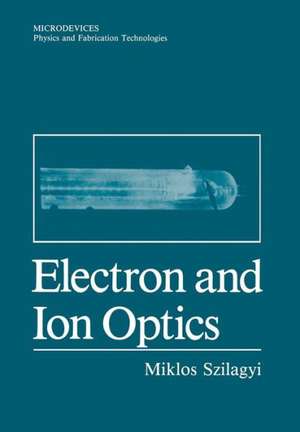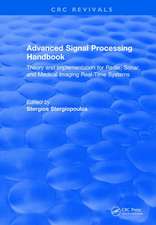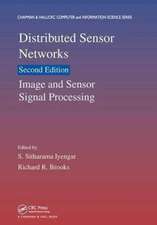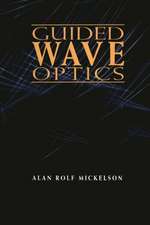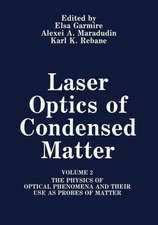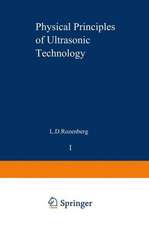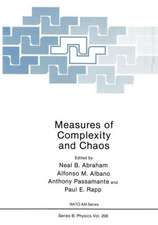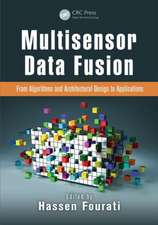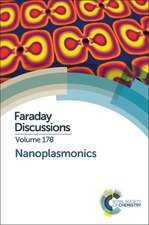Electron and Ion Optics: Microdevices
Autor Miklos Szilagyien Limba Engleză Paperback – 10 oct 2011
Din seria Microdevices
- 18%
 Preț: 951.91 lei
Preț: 951.91 lei - 18%
 Preț: 953.35 lei
Preț: 953.35 lei - 18%
 Preț: 1250.88 lei
Preț: 1250.88 lei - 18%
 Preț: 958.38 lei
Preț: 958.38 lei - 18%
 Preț: 1395.94 lei
Preț: 1395.94 lei - 20%
 Preț: 572.40 lei
Preț: 572.40 lei - 18%
 Preț: 1242.21 lei
Preț: 1242.21 lei - 18%
 Preț: 1240.30 lei
Preț: 1240.30 lei - 18%
 Preț: 966.15 lei
Preț: 966.15 lei - 18%
 Preț: 955.08 lei
Preț: 955.08 lei -
 Preț: 401.24 lei
Preț: 401.24 lei - 15%
 Preț: 639.41 lei
Preț: 639.41 lei - 15%
 Preț: 651.67 lei
Preț: 651.67 lei -
 Preț: 395.25 lei
Preț: 395.25 lei - 18%
 Preț: 981.58 lei
Preț: 981.58 lei - 18%
 Preț: 966.59 lei
Preț: 966.59 lei - 18%
 Preț: 954.93 lei
Preț: 954.93 lei
Preț: 1123.98 lei
Preț vechi: 1370.71 lei
-18% Nou
Puncte Express: 1686
Preț estimativ în valută:
215.10€ • 220.28$ • 178.93£
215.10€ • 220.28$ • 178.93£
Carte tipărită la comandă
Livrare economică 18 martie-01 aprilie
Preluare comenzi: 021 569.72.76
Specificații
ISBN-13: 9781461282471
ISBN-10: 1461282470
Pagini: 560
Ilustrații: 556 p.
Dimensiuni: 170 x 244 x 29 mm
Greutate: 0.88 kg
Ediția:Softcover reprint of the original 1st ed. 1988
Editura: Springer Us
Colecția Springer
Seria Microdevices
Locul publicării:New York, NY, United States
ISBN-10: 1461282470
Pagini: 560
Ilustrații: 556 p.
Dimensiuni: 170 x 244 x 29 mm
Greutate: 0.88 kg
Ediția:Softcover reprint of the original 1st ed. 1988
Editura: Springer Us
Colecția Springer
Seria Microdevices
Locul publicării:New York, NY, United States
Public țintă
ResearchCuprins
1. Introductory Survey.- 1-1. Introduction.- 1-2. Electromagnetic Fields.- 1-3. Some Basic Classical Mechanics.- 1-4. A Little Reminder of Geometrical Optics.- Summary.- 2. Motion of Charged Particles in Electric and Magnetic Fields.- 2-1. The Lagrangian.- 2-2. Conservation of Energy.- 2-3. The Equations of Motion.- 2-4. The Trajectory Equations.- 2-5. The Relativistic Potential.- 2-6. The Electron Optical Index of Refraction.- 2-7. Particles in Homogeneous Fields.- Summary.- 3. Determination of Electric and Magnetic Fields.- 3-1. Analytical Methods.- 3-2. Measurement of Fields and Analog Methods.- 3-3. Numerical Methods.- Summary.- 4. Focusing With Axially Symmetric Fields.- 4-1. Busch’s Theorem.- 4-2. The General Trajectory Equation.- 4-3. The Paraxial Ray Equation.- 4-4. Image Formation by Paraxial Rays.- 4-5. The Helmholtz-Lagrange Formula.- 4-6. Cardinal Elements.- 4-7. Electron and Ion Lenses.- 4-8. Systems of Lenses.- 4-9. The Thin-Lens Approximation.- 4-10. Examples of Paraxial Focusing.- Summary.- 5. The Theory of Aberrations.- 5-1. The Method of Characteristic Functions.- 5-2. Geometrical Aberrations.- 5-3. Chromatic Aberration.- 5-4. Asymptotic Aberrations.- 5-5. Aberrations of Lens Combinations.- 5-6. Other Sources of Aberrations and Aberration Correction.- 5-7. Simultaneous Action of Different Aberrations.- Summary.- 6. Numerical Techniques for Ray Tracing and Calculation of Aberrations.- 6-1. Analytical Models.- 6-2. Numerical Ray Tracing.- 6-3. Numerical Calculation of Aberration Integrals.- Summary.- 7. Electrostatic Lenses.- 7-1. General Properties and Relationships.- 7-2. Electrostatic Lens Models.- 7-3. Two-Electrode Immersion Lenses.- 7-4. Unipotential Lenses.- 7-5. Three-Electrode Immersion Lenses.- 7-6. Multielectrode Lenses.- 7-7. Comparison ofDifferent Electrostatic Lenses.- 7-8. Lenses Immersed in Fields.- Summary.- 8. Magnetic Lenses.- 8-1. General Properties and Relationships.- 8-2. Long Lenses.- 8-3. Magnetic Lens Models.- 8-4. Short Lenses.- Summary.- 9. Computer-Aided Optimization and Synthesis of Electron and Ion Lenses.- 9-1. Is Aberrationless Electron/Ion Optics Possible?.- 9-2. Optimization: Synthesis versus Analysis.- 9-3. Early Attempts of Synthesis.- 9-4. Calculus of Variations.- 9-5. Dynamic Programming.- 9-6. Optimal Control Procedure.- 9-7. Analytical Functions.- 9-8. Reconstruction of Electrodes and Pole Pieces from the Optimized Axial Field Distributions.- 9-9. Polynomial and Spline Lenses.- 9-10. The Synthesis Procedure.- 9-11. Artificial Intelligence Techniques.- Summary.- 10. Multipole Lenses.- 10-1. The Fields of Multipole Lenses.- 10-2. The Paraxial Ray Equations.- 10-3. Image Formation by Paraxial Rays.- 10-4. Systems of Quadrupoles.- 10-5. Aberrations of Multipole Lenses.- Summary.- 11. Beam Deflection.- 11-1. Deflection for Scanning.- 11-2. Electrostatic and Magnetic Prisms.- 11-3. New Symmetries-New Possibilities.- Summary.- 12. High-Intensity Beams.- 12-1. Space-Charge Optics.- 12-2. The Boersch Effect.- Summary.- References.
